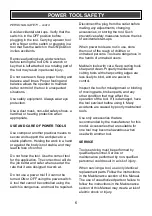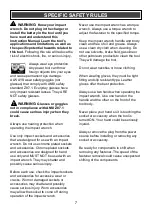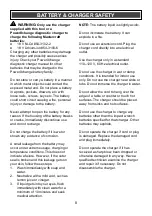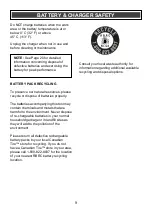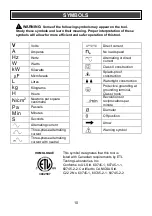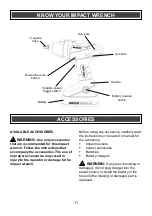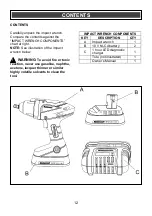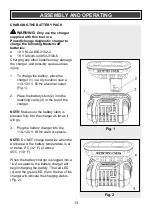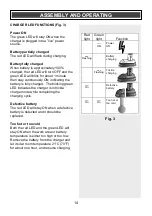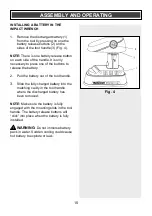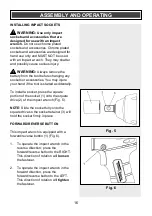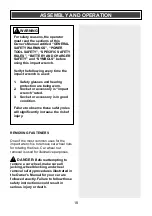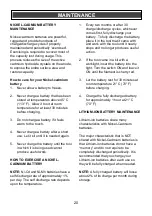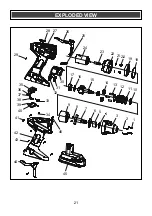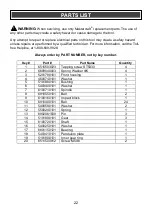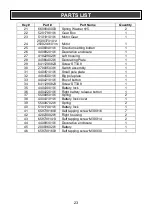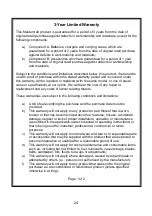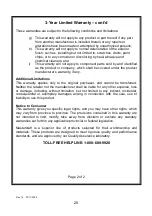
20
NICKEL-CADMIUM BATTERY
MAINTENANCE
Nickel-cadmium batteries are powerful,
rugged and provide hundreds of
charge/discharge cycles if properly
maintained and periodically ‘exercised’.
Exercising is required to recover most of
the capacity lost during usage. This
process reduces the size of the active
cadmium hydroxide crystals on the anode,
to expose the entire surface area and
restore capacity.
How to care for your Nickel-cadmium
battery
1. Never allow a battery to freeze.
2. Never charge a battery that has been
stored at temperatures above 45° C
(113° F). Allow it to sit at room
temperature for at least 30 minutes
before charging.
3. Do not charge a battery if it feels
warm to the touch.
4. Never charge a battery after a short
use. Let it sit until it is needed again.
5. Never charge the battery until the tool
in which it is being used cannot
produce useful work.
HOW TO EXERCISE A NICKEL-
CADMIUM BATTERY
NOTE:
Ni-Cd and Ni-Mh batteries have a
self discharge rate of approximately 1%
per day. The self discharge rate depends
upon the temperature.
1. Every two months or after 30
charge/discharge cycles, whichever
comes first, fully discharge your
battery. To fully discharge the battery,
place it in the tool that it came with
and work with the tool until it nearly
stops and no longer produces useful
action.
2. If the tool came in a kit with a
worklight, insert the battery into the
light. Turn the switch ON and leave it
ON until the filament is cherry red.
3. Let the battery rest for 30 minutes at
room temperature 21°
C (70° F)
before charging.
4. Charge the fully discharged battery
for approximately 1 hour at 21° C
(70° F).
LITHIUM-ION BATTERY MAINTENANCE
Lithium-ion batteries share many
characteristics with Nickel-Cadmium
batteries.
The major characteristic that is NOT
shared with Nickel-Cadmium batteries is
that Lithium-ion batteries do not have a
“memory” and do not require to be
completely discharged periodically. It is
recommended that you charge your
Lithium-ion batteries after each use so
they will be fully charged when needed.
NOTE:
A fully charged battery will loose
about 2% of its charge per month during
storage.
MAINTENANCE

